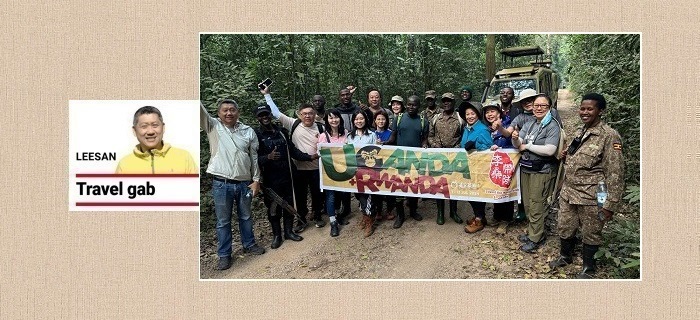The chimpanzees and I – by leesan
Leesan, still on the African continent, meets another well-loved primate – mountain chimpanzees.
STILL remember the Royal Londan Circus tours that were popular in the 1970s and 1980s? My travel buddy, Boon, recalled that what he loved most during those days was to see the chimpanzees perform. “These chimpanzees were like small kids. So cute, funny, and very smart, too. They always win tremendous applause from the audience.” he said.

Leesan(left) in Kibale National Park with rangers, eco-guides and travel buddies, all ready to track mountain chimpanzees in the rainforest. – Photos:leesan
I myself have always been curious where these circus animals actually came from. They can’t be wild, right? Of course, nowadays circus owners no longer use chimpanzees in their shows as they are an endangered species. Chimpanzees are not just another animal species, though.
They belong to the Hominidae family, and are considered the closest cousins to the human species among the primates, with a DNA resemblance of nearly 99%.
Adult chimpanzees boast an IQ level equivalent to that of a human child. Therefore, it comes as no surprise that they are able to communicate among themselves through vivid facial expressions
and body language. Additionally, they are also capable of using simple tools with some precision, such as using twigs to catch termites, or a leaf to scoop water for drinking.
Mountain chimpanzees are the ones that deserve urgent attention. Their biggest habitat is within the 700sq km equatorial rainforest of Kibale National Park in Uganda, where only about 1,500 of them are still found roaming freely. Mountain chimpanzees can live up to between 45 and 50 years, but as there are so few on this planet, they are considered extremely rare and must be protected at all cost.
Although the mountain chimpanzees in Uganda are protected animals, their survival is still very much worrying. Destruction of their habitat, illegal poaching and human activities have collectively posed major challenges to their existence.
In order to protect them further, as well as to preserve the health and equilibrium of the entire ecosystem, the Ugandan government and international wildlife conservation organisations have adopted a series of measures, including the establishment of protected zones, site patrols and surveillance, community education and ecotourism initiatives. We have good reason to believe that the mountain chimpanzees in Uganda will continue to breed and thrive on this beautiful land, providing many more leasant surprises and inspiration to humans and Nature.
Nevertheless, experts remain concerned that it is only a matter of time before mountain chimpanzees eventually become extinct. Fortunately, Uganda and several neighbouring African countries have been very actively protecting the natural habitat of mountain chimpanzees, and other wild animals on the continent.
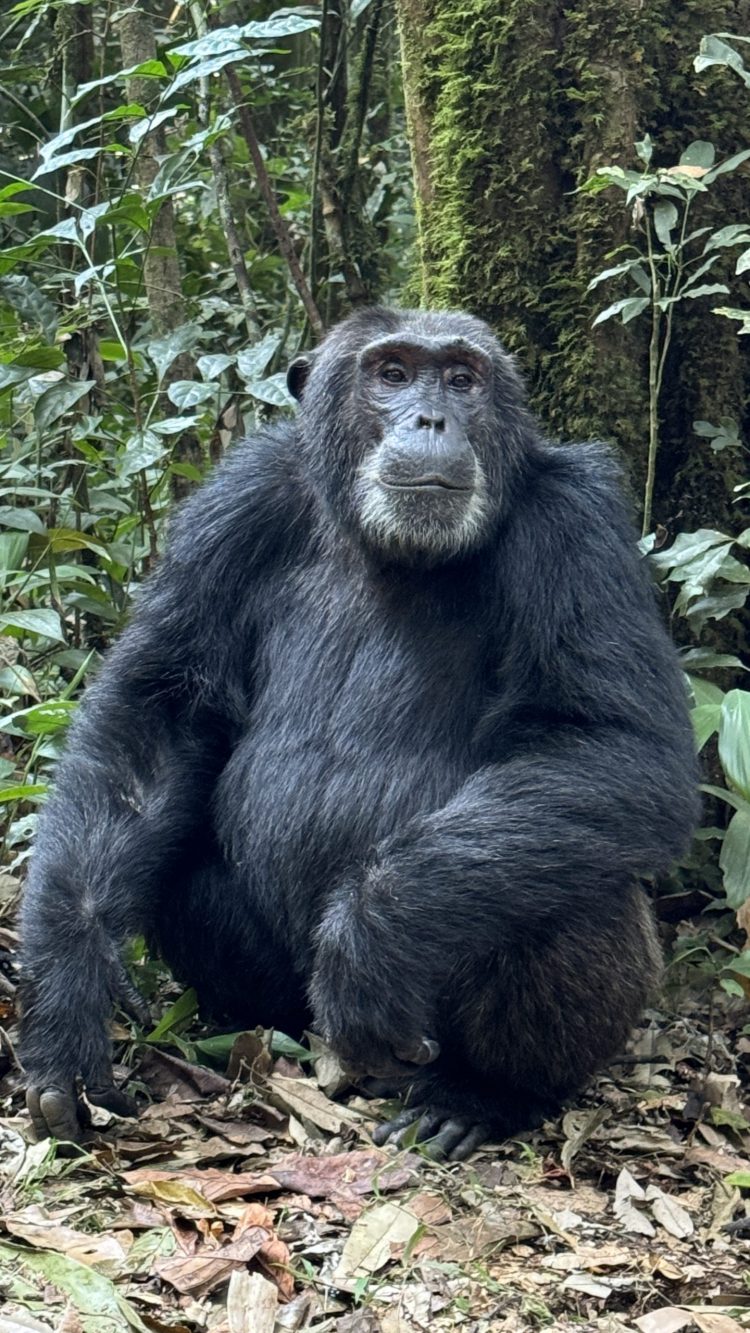
The community leader sits with a calm yet powerful presence.
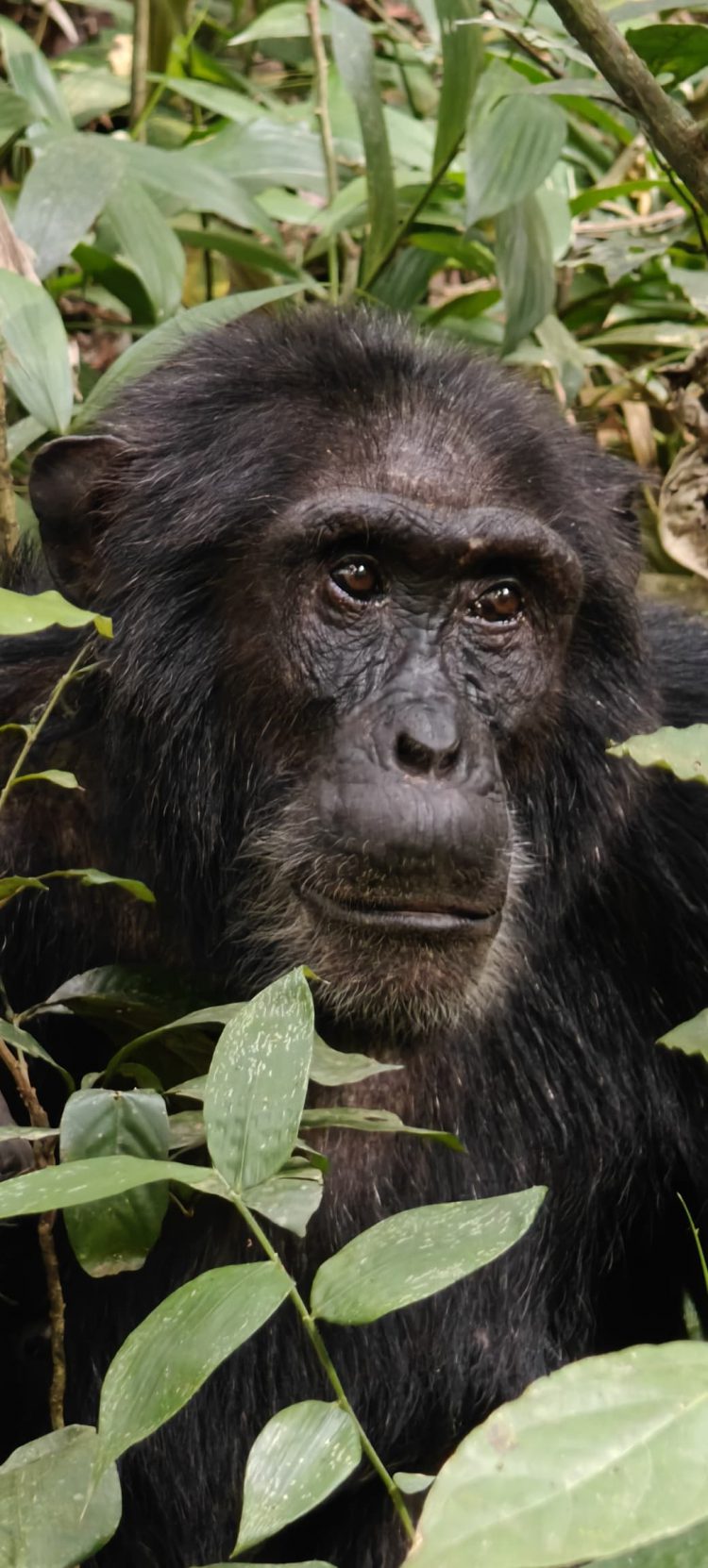
Chimpanzees have facial expressions and movements similar to those of humans.
The authorities have also systematically controlled the number of visitors into the forest, and only allowing them to observe the chimpanzees’ from a near distance, escorted by ecoguides. As only around 100 visitors are allowed into the forest each day, the US$200 (RM892) admission tickets could be hard to come by during peak holiday seasons. I am now going into the Kibale National Park forest with my travel buddies in the company of two eco-guides and two armed military guards, to track down the mountain chimpanzees in the depths of the rainforest.
Normally, mountain chimpzees enjoy their breakfast on top of 20m-to-40m-tall trees. Their daily diet includes fruits, leaves, nuts, seeds, insects, and occasionally, some small mammals they manage to catch. During meal times, mountain chimpanzees will typically make some loud noises to relay messages and information by way of highly intricate vocals.
After they finish eating, they will climb down the trees.
Sometimes, they may even take the initiative to approach the humans visiting their home because they are well aware that these folks will not harm or capture them. As I said, chimpanzees are the apes genetically closest to humans, and there’s often this inexplicable sense of affinity or perhaps even familiarity that they feel among humans. Unlike the family-based lifestyle of Ugandan gorillas, the chimpanzees embrace a rather complicated community living in clusters of three to five animals.
Their social structure is highly versatile and dynamic, and individuals within a community establish and maintain their relations through complicated social interactions.
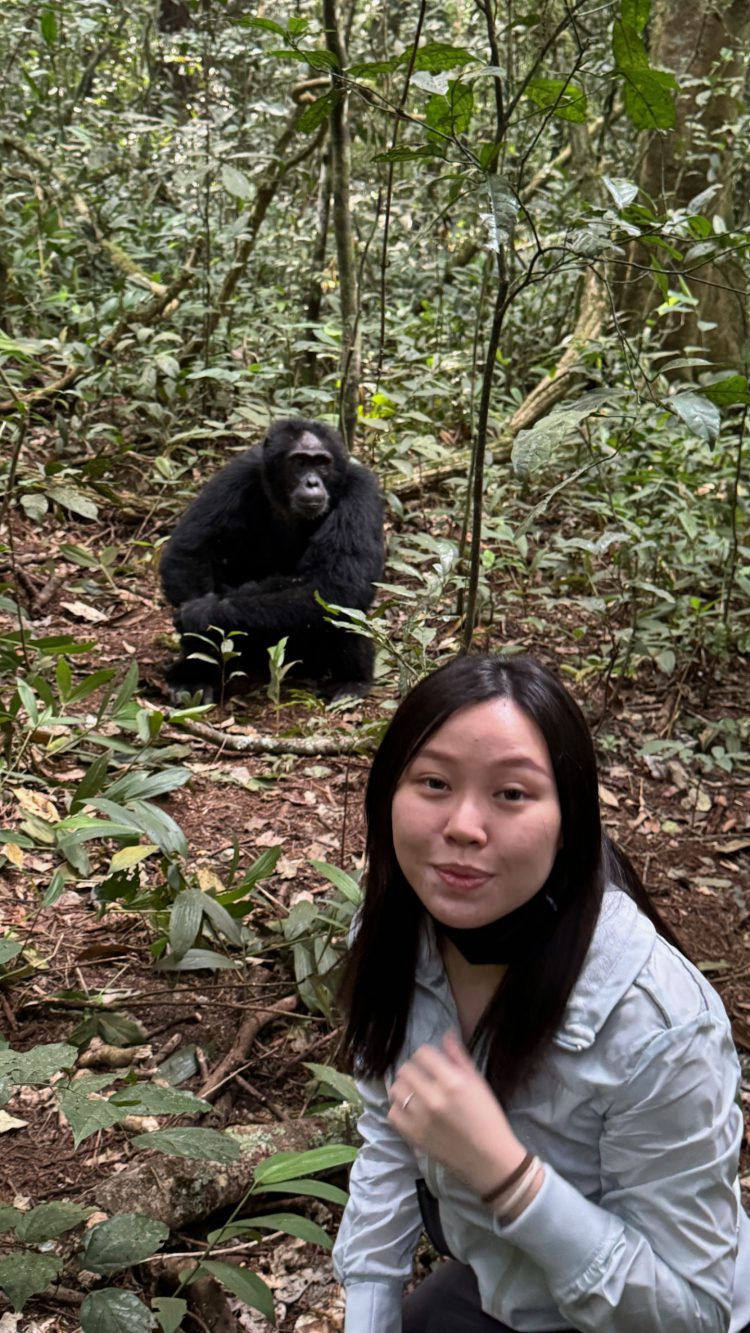
Leesan’s travel buddy, KK, was so excited when a chimpanzee started walking towards her.
The few chimpanzees we spotted early in the morning appeared to be busily engaged in their communication. Indeed, the entire forest was filled with noises made by these primates! Chimpanzees, gorillas, bonobos, orang utans, and humans constitute the Hominidae family. They all had their origins in the same ancestral species some six to seven million years ago. But, why is it that we can be so different while genetically so similar?
This is because we have gradually evolved from the same ancestors and have become so different now from the other great apes owing to changes to our DNA over the millennia. These DNA changes have given rise to our vast differences both in appearance and in behaviour. Travellers from across the world have braved the vast geographical distances and walked for kilometres in the dense forest just to catch a glimpse of the humans’ closest cousins. And they probably want to do it again!
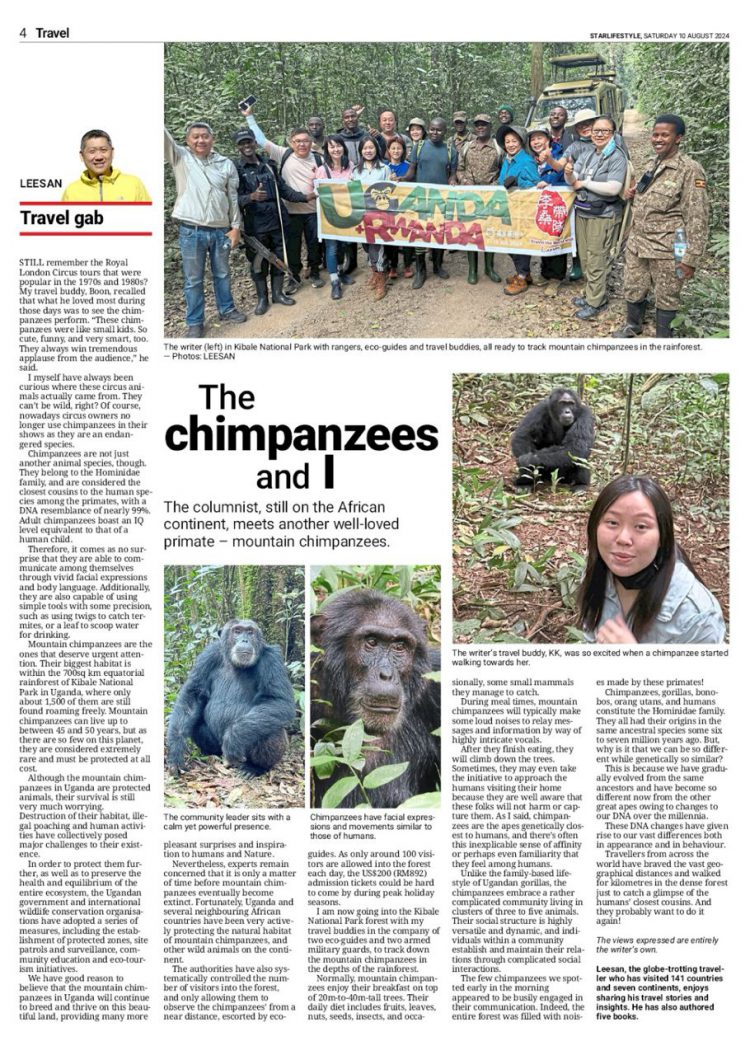
Published in The Star, 27 July 2024
全球超过80000家酒店,Apple101助您轻松订房,出行无忧,绝对优惠价。入住期间付款,多数客房可免费取消!
